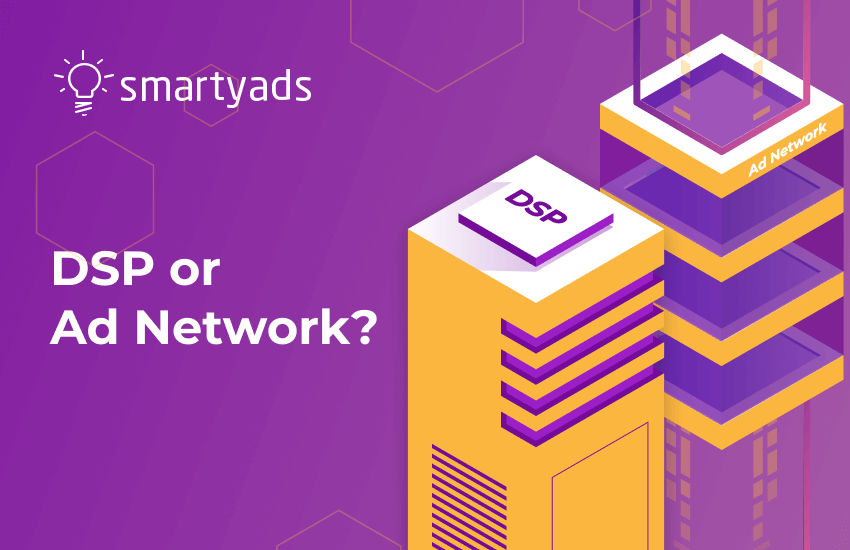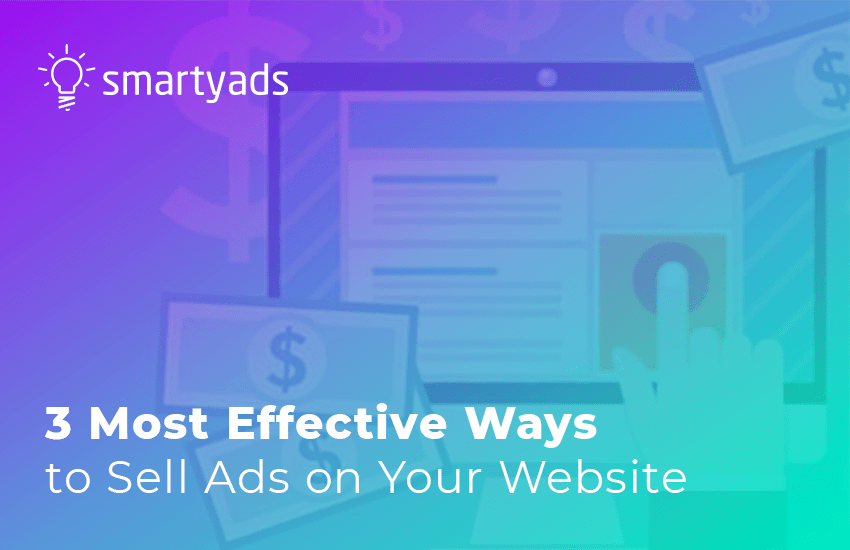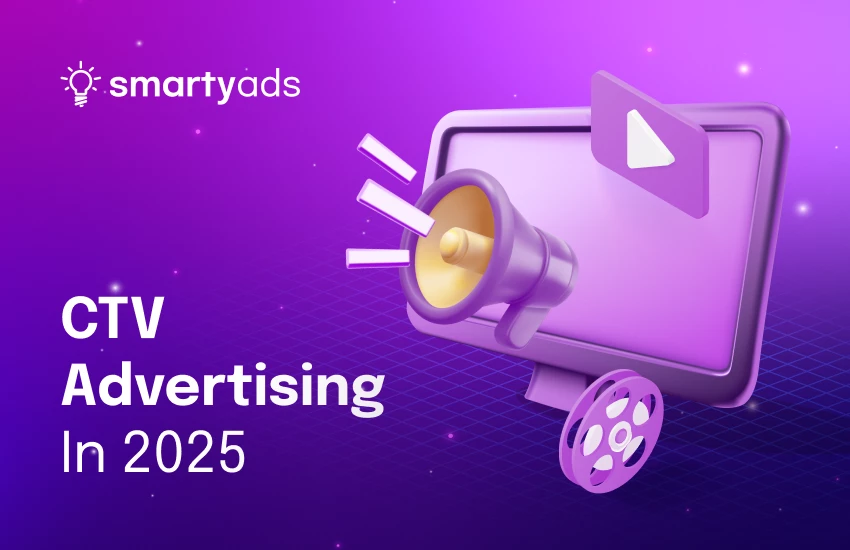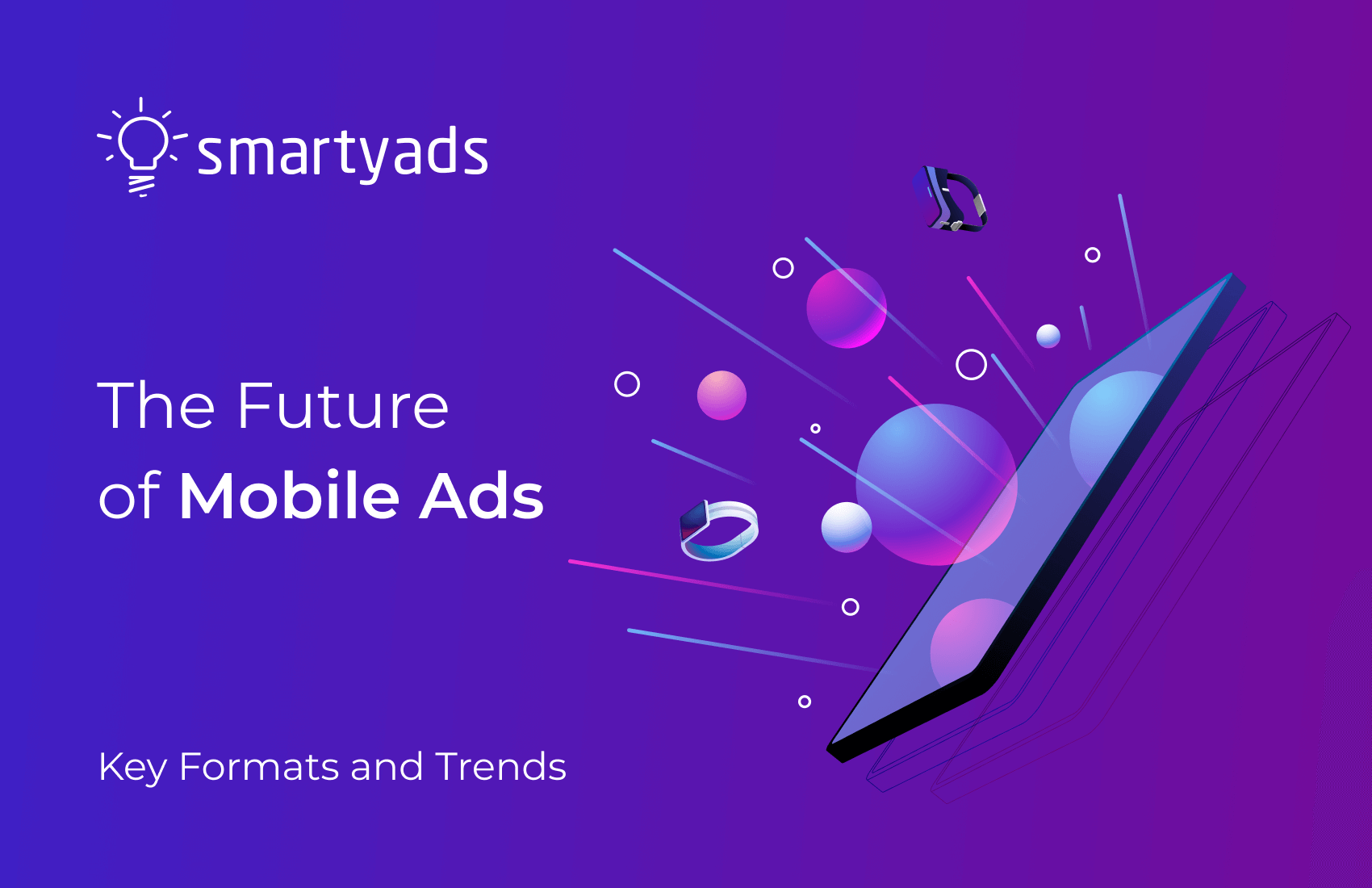A remarkable 51.9% of non-social display advertising is now acquired through programmatic channels, based on IAB Europe's recent findings, with agencies documenting a 68% growth in programmatic investments year-over-year.
Picture the golden days when digital advertising meant simple handshakes between advertisers and website owners. Those straightforward times seem almost nostalgic now. Current advertising technology resembles an intricate orchestra with countless performers, lightning-fast automated auctions, and enough technical abbreviations to confuse seasoned professionals - DSP, DMP, CDP, and ATD. The distinction between DSP and ad network confuses even veteran marketers who've mastered the industry for decades.
If you're exploring the programmatic wilderness for the first time, congratulations - you've found the perfect starting point. We'll decode the DSP vs ad network mystery without overwhelming you with technical terminology, demonstrating why intelligent media purchasers are embracing one solution while discarding alternatives.
More than half — specifically 51.9% — of all non-social display advertisements are currently acquired through programmatic channels, based on the most recent IAB Europe findings. Agencies are maximizing this transformation, documenting a 68% year-on-year increase in programmatic investments.
Digital advertising previously functioned like a community bazaar: advertisers encountered publishers in person, negotiated direct agreements, and everyone comprehended the framework. Today's environment resembles a bustling commodities trading floor - algorithms battling in microsecond competitions, information streaming through connected networks, and technical terms reproducing exponentially. Even seasoned marketing professionals occasionally struggle when trying to find difference between DSP and ad network.
If programmatic advertising appears like mastering an alien dialect, breathe easy - you're surrounded by fellow learners. This manual eliminates the DSP vs. ad network bewilderment, removes technical complications, and uncovers why contemporary skilled media purchasers progressively choose one method over traditional alternatives.

What is a Demand-Side Platform?
A Demand-Side Platform represents advertising technology enabling advertisers to engage in real-time bidding competitions. Consider it your command headquarters for acquiring ad inventory from numerous sources concurrently - independent publishers, ad networks, and ad exchanges - all managed through one dashboard.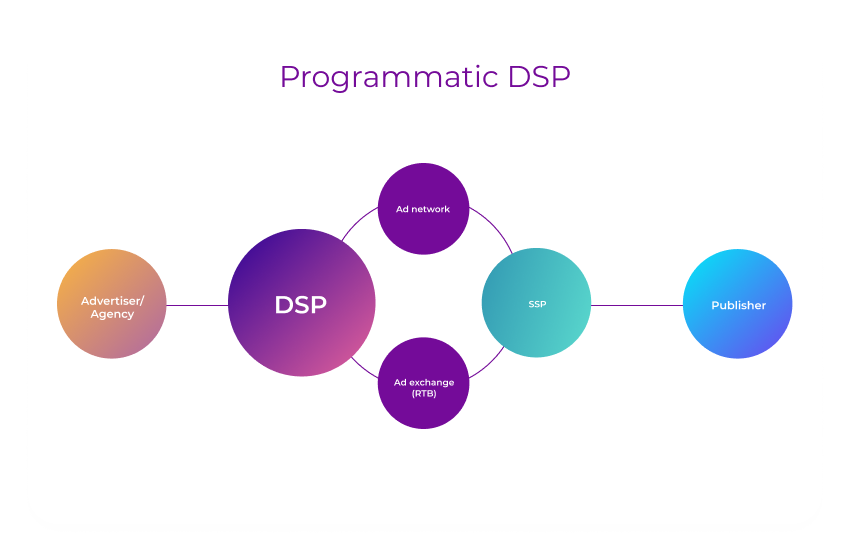
DSP platforms constitute the powerhouse of programmatic advertising, where human speculation gets supplanted by algorithmic accuracy. These DSP systems collaborate with Supply-Side Platforms to automatically link publisher inventory with appropriate advertisements based on targeting criteria established by both advertisers and publishers. This connection occurs within milliseconds, creating the most economical approach for purchasing and distributing ad inventory.
The brilliance of a DSP resides in its automation capabilities. Rather than negotiating individual agreements with numerous publishers, you access thousands of websites through one platform, competing for advertising spaces that match your campaign requirements.
Benefits of Using a DSP for Advertisers
DSPs provide multiple advantages that make them compelling for contemporary advertisers:
- Real-time optimization: Modify bids, targeting, and creative components immediately based on performance analytics
- Transparent reporting: Observe precisely where your advertisements display and their performance on individual websites
- Custom audience targeting: Build exact audience segments utilizing your proprietary data and parameters
- Cost efficiency: Invest fair market pricing for individual impressions through real-time bidding
- Broader reach: Access inventory from numerous ad exchanges and networks via one platform
- Granular control: Establish specific bid amounts for various audience segments, timeframes, and locations
- Data integration: Link your CRM and analytics systems for enhanced targeting and measurement
What is a Digital Advertising Network?
An advertising network functions as an intermediary connecting advertisers with publishers. These advertising network platforms gather inventory from publishers, organize it into classifications, and distribute these "bundles" to advertisers according to audience segments.
Ad networks streamlined media purchasing during the pre-programmatic period. They consolidated inventory from numerous publishers and presented it to advertisers who wanted to bypass negotiations with countless individual websites.
Key Types of Ad Networks
Various ad networks concentrate on particular objectives and provide different quality levels and targeting accuracy.
Horizontal ad networks
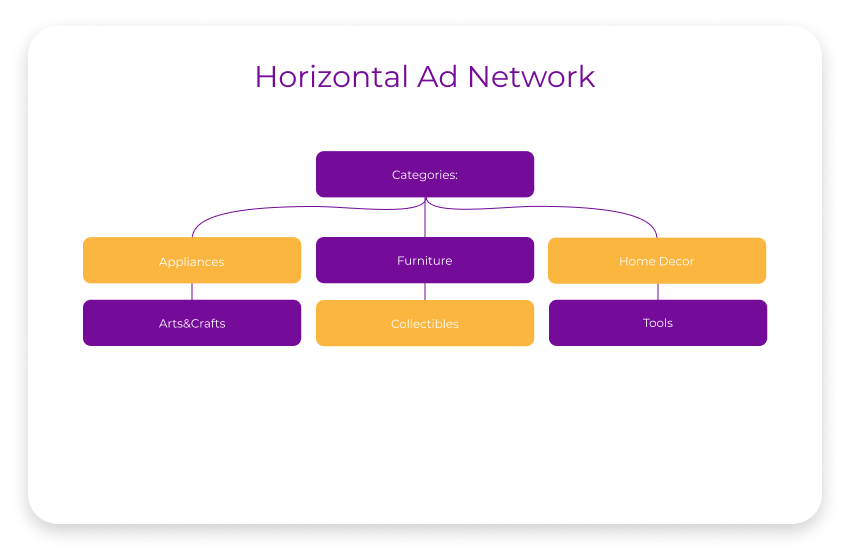
Horizontal networks deploy the broadest approach, collaborating with countless publishers spanning various industries. The primary benefit? Nearly any publisher can participate, generating enormous inventory collections.
These networks usually function on a CPC (cost-per-click) framework, meaning you invest only when someone clicks your advertisement. While this appears attractive for advertisers managing limited budgets, targeting capabilities remain rather restricted. You're fundamentally purchasing extensive reach without significant precision.

Vertical ad networks
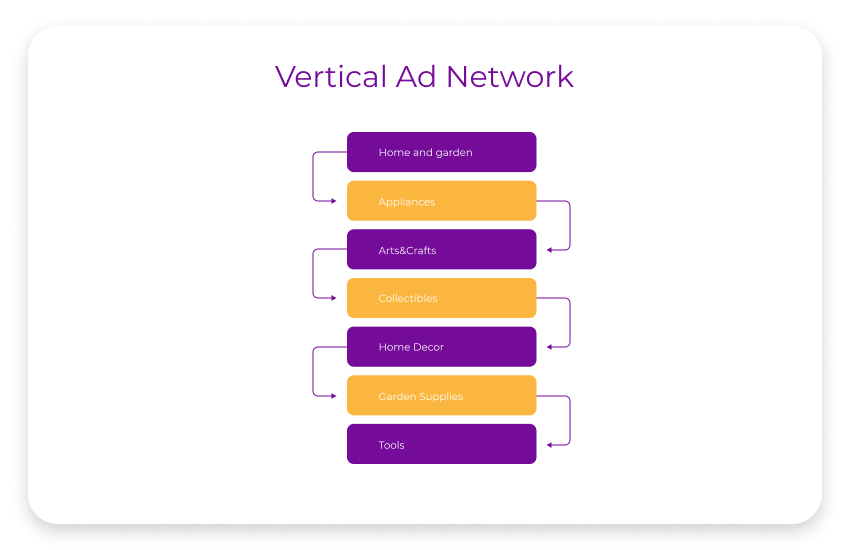
Vertical networks concentrate on particular industries or interests - lifestyle, sports, hobbies, family content, and comparable niches. They exclusively collaborate with publishers whose content matches their selected vertical.
This specialization enables superior audience targeting compared to horizontal networks. Nevertheless, if your target audience encompasses multiple interests or demographics, you might require collaboration with several vertical networks to accomplish sufficient reach.
Premium ad networks
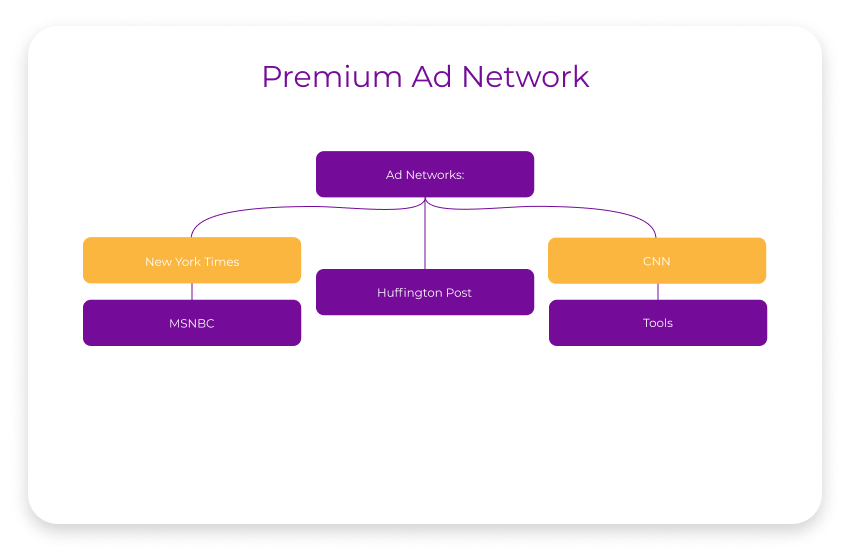
Premium networks uphold the strictest standards, accepting exclusively elite publishers with considerable traffic volumes - consider The Guardian, Huffington Post, or prominent news platforms. Gaining acceptance into these networks proves difficult for most publishers.
For advertisers, premium networks provide the most secure environment and superior-quality inventory. You'll invest more, but you're assured placement on credible, heavily-trafficked websites with active audiences.
Ad Network vs Ad Exchange
Individuals frequently mistake ad networks for ad exchanges, yet they perform distinct roles. An ad exchange functions as a digital marketplace where demand and supply parties trade directly, resembling a stock exchange. Ad networks, conversely, operate as intermediaries who bundle and redistribute publisher inventory.
DSPs link to numerous ad networks and ad exchanges, providing advertisers the most comprehensive selection of ad inventory through one interface.
Read more about the distinctions between ad networks and ad exchanges.
DSP vs Ad Network: Comparison Table
Let’s summarize the major features of both ad networks and DSPs in the following table:
Benchmark | Ad Network | DSP |
Key Characteristic | A company that connects publishers and advertisers. | A technology that helps advertisers buy ads programmatically. |
Users | Publishers, advertisers, and agencies. | Advertisers only. |
Transparency | Lacks transparency, since both advertisers and publishers are not aware of partners they’re dealing with. | Offers more transparency, as media buyers can choose websites to buy inventory from on their own. |
Audience segmentation | Has pre-defined audience segments and categories. The client can’t change or update them. | Advertisers can target their audience more precisely, applying their custom filters and adjustments. |
Real-Time Bidding | Not all ad networks support real-time bidding. | DSPs are designed to implement real-time bidding. |
CPM | CPM is fixed and is determined by the ad network. All impression cost the same regardless of their value. | The real value of each impression defines its CPM. Advertisers are able to set any bids they want. |
Automation | Ad networks are not automated and require separate contracts for each purchase. | All processes are carried out automatically by the smart algorithms of the platform. |
Examples | Google's AdSense, Yahoo Publisher Network. | SmartyAds DSP |
Which Is Better for Media Buying: DSP or Ad Network?
The differences between ad networks and demand-side platforms establish DSPs as the obvious choice for contemporary media purchasing. While ad networks fulfilled their role during early digital advertising periods, they cannot compete with the efficiency and authority that DSPs deliver currently.
Ad networks experience multiple restrictions that annoy advertisers. Fixed CPM pricing means you invest identical amounts for valuable impressions on premium websites as you do for inferior impressions on obscure sites. Restricted transparency maintains you uninformed about actual ad placement locations, complicating campaign optimization or brand safety assurance.
DSPs resolve these challenges by providing direct access to real-time bidding competitions. You observe exactly where advertisements execute, invest fair market pricing for individual impressions, and modify strategies based on genuine performance analytics.
Why DSPs Offer More Control and Scale
DSPs transform media purchasing by returning authority to advertisers. You can establish custom targeting parameters that extend far beyond fundamental demographic choices provided by ad networks. Want to target individuals who visited your website without completing purchases? DSPs enable this through advanced audience segmentation.
Real-time bid management allows instant spending adjustments based on performance. If particular websites or audience segments produce superior results, you can raise bids to secure additional impressions. Alternatively, you can decrease bids or automatically block underperforming inventory.
Transparent analytics deliver comprehensive insights into every campaign aspect. You'll identify which websites generate maximum clicks, which creative variations perform optimally, and how various audience segments respond to your messaging. This detailed data facilitates continuous optimization that traditional ad networks simply cannot provide.
The scale benefits of DSPs cannot be emphasized enough. Rather than managing relationships with numerous ad networks, you access thousands of publishers through one platform. This consolidated approach conserves time while guaranteeing you never overlook opportunities to connect with your target audience.
Making the Final Choice: Ad Network vs. DSP
The decision between ad network vs DSP becomes obvious when examining the current digital advertising environment. Contemporary advertisers require flexibility, transparency, and authority to compete successfully. Ad networks, featuring fixed pricing and restricted targeting capabilities, simply cannot satisfy these demands.
DSPs supply unlimited inventory access from numerous sources and accurate targeting capabilities to build custom audience segments. Advertisers gain access to countless publishers globally and only need to manage advertising campaigns, while media purchasing and planning processes execute through real-time bidding.
To begin purchasing inventory programmatically, you must register for a Demand-Side platform. Smarty Ads provides: an advanced DSP for detailed campaign optimization.
Strengthen your brand advertising, register at SmartyAds DSP today!

FAQ
DSPs deliver superior transparency, real-time bidding, and customized targeting capabilities. You gain direct access to numerous ad exchanges, invest fair market rates, and maintain complete authority over advertisement placement and spending amounts.
SmartyAds DSP provides automated optimization, detailed targeting controls, and transparent reporting. You can access worldwide inventory, establish custom bid strategies, and monitor performance across all campaigns through one consolidated interface.
The fundamental distinction between DSP and advertising network involves authority and automation. DSPs are technology platforms facilitating programmatic purchasing with real-time bidding, while ad networks are companies that bundle and distribute publisher inventory at predetermined prices.
